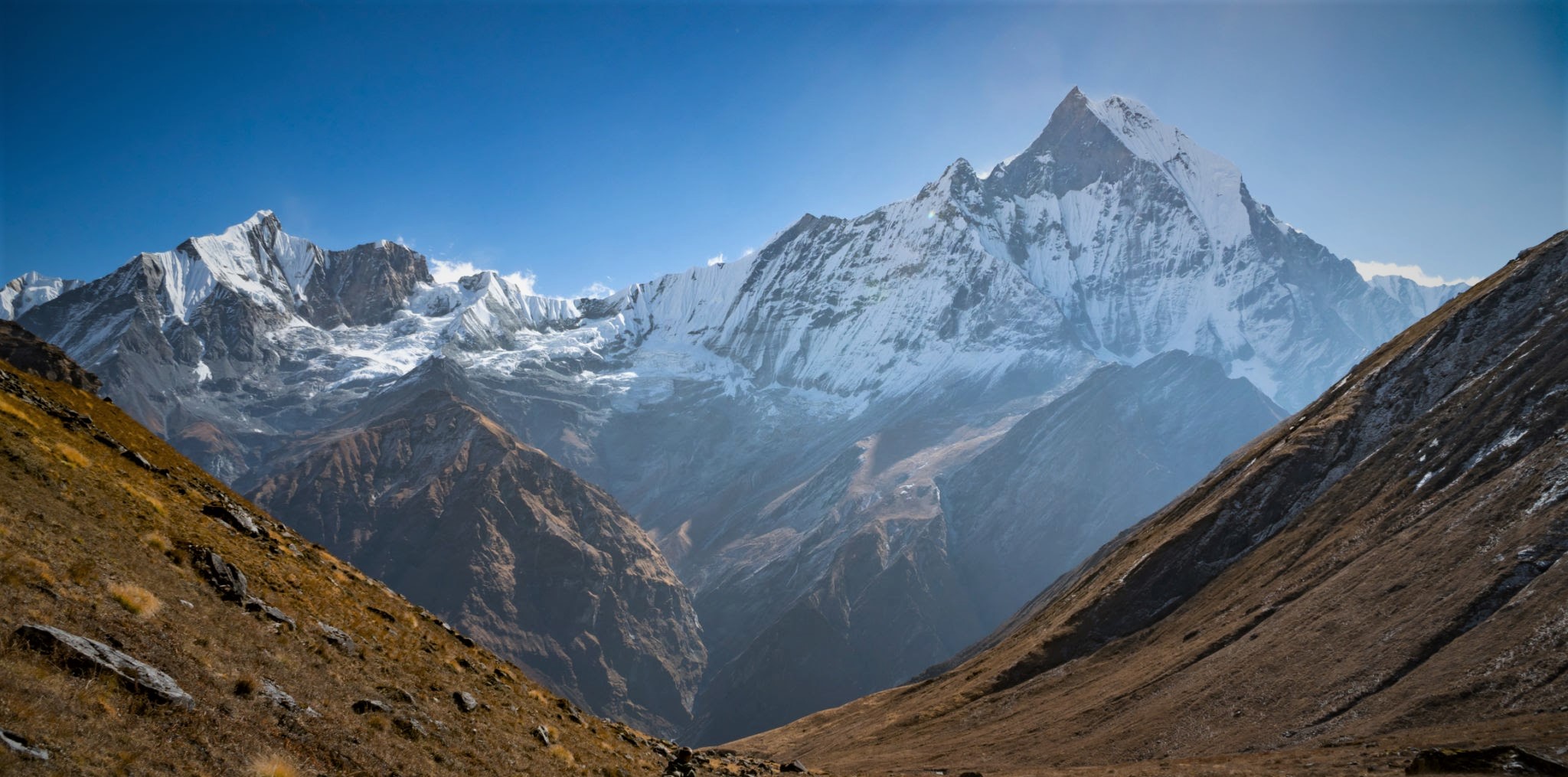
Annapurna Base Camp Trek: Weather of this Stunning Trekking Destination
The Annapurna Base Camp Trek is a popular trekking destination in the Annapurna region of Nepal. It offers panoramic views of snow-capped mountains and stunning natural beauty. The weather and temperature on the Annapurna Base Camp Trek vary depending on the time of year you choose to trek.
The best time to trek is during the autumn season (September to November) or the spring season (March to May). The weather is generally dry, and the temperatures are mild. The monsoon season (June to August) should be avoided as the trekking trails can be slippery and dangerous due to heavy rain.
In winter (December to February), the temperature can be extremely cold. The trek may be more challenging due to snow and ice on the trails. It is important to plan your trekking trip carefully and choose the right season to ensure a safe and enjoyable trekking experience.
Introduction of ABC Trek
Trekking in Nepal is an adventure of a lifetime, and the Annapurna Base Camp trek is one of the most popular trekking destinations in the country. With panoramic views of snow-capped mountains, diverse flora and fauna, and unique cultural experiences, this trek is a must-do for any trekking enthusiast.
However, as with any high-altitude trek, it is important to understand the weather and temperature conditions to ensure a safe and enjoyable experience. In this blog, we will explore the weather patterns of the Annapurna Base Camp trek, the best time to trek, and what to expect in terms of weather and temperature.
Annapurna Base Camp Trek Overview
The Annapurna Base Camp trek is a popular trekking destination in the Annapurna region of Nepal. It is a moderate to challenging trek that takes trekkers through diverse landscapes. This includes terraced fields, rhododendron forests, and high-altitude glaciers.
The trek starts in Nayapul and passes through various villages such as Ghorepani, Tadapani, Chhomrong, and Deurali before reaching Annapurna Base Camp. The highest point of the trek is Thorong La Pass. It sits at an altitude of 4,130 meters (13,550 feet) above sea level.
Weather and Temperature
The weather and temperature conditions on the Annapurna Base Camp trek vary depending on the season. The two main trekking seasons is autumn (September to November) and spring (March to May). These seasons are the best time to trek as the weather is clear and dry, and the temperatures are moderate.
Autumn Season
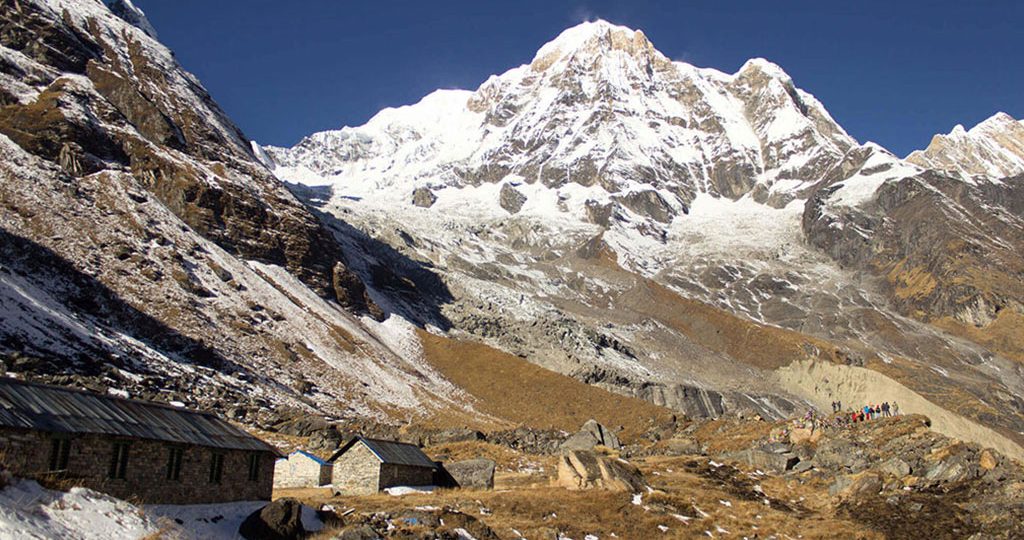
The autumn season is the most popular time to trek to Annapurna Base Camp. During this time, the weather is clear, and the temperatures are moderate, making it the ideal season for trekking. The daytime temperatures range from 15°C to 20°C (59°F to 68°F).
The nighttime temperatures can drop to as low as -5°C to 5°C (23°F to 41°F) in higher altitudes. The skies are usually clear, and trekkers can enjoy panoramic views of the snow-capped mountains.
Spring Season
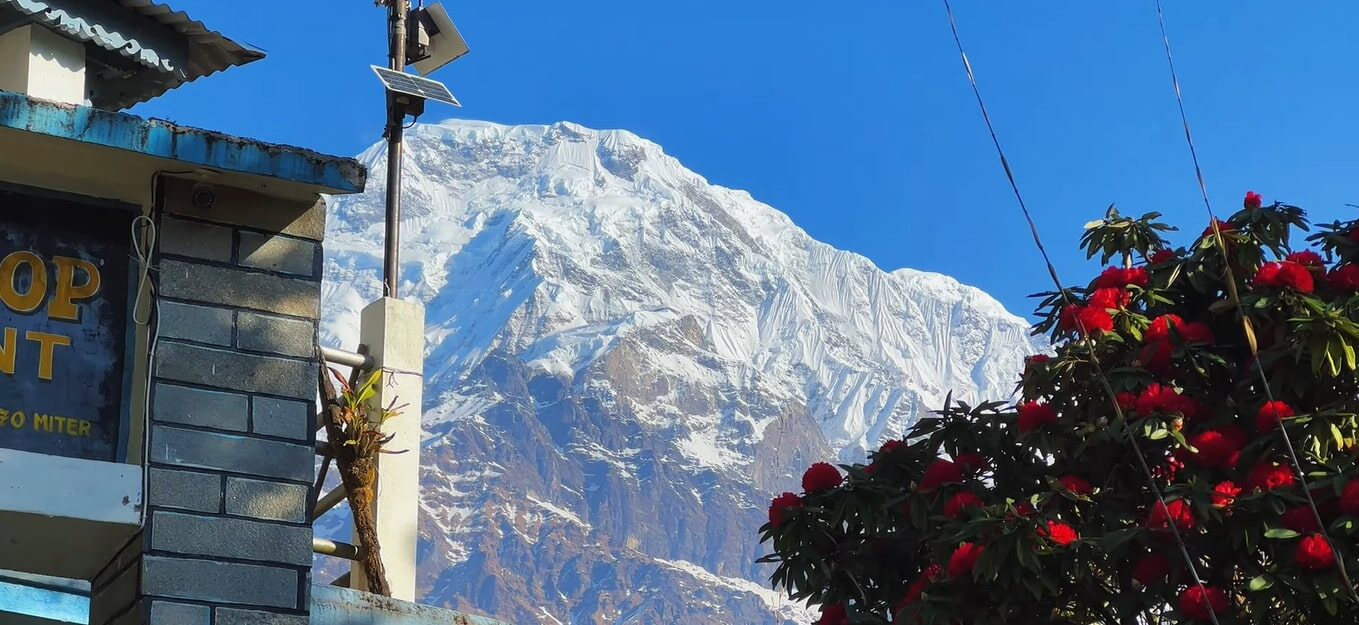
The spring season is another popular time to trek to Annapurna Base Camp. During this time, the weather is mild, and the temperatures are comfortable. The daytime temperatures range from 15°C to 20°C (59°F to 68°F).
The nighttime temperatures can drop to as low as -5°C to 5°C (23°F to 41°F) in higher altitudes. The skies are usually clear, and trekkers can enjoy the beautiful rhododendron flowers in full bloom.
Monsoon Season
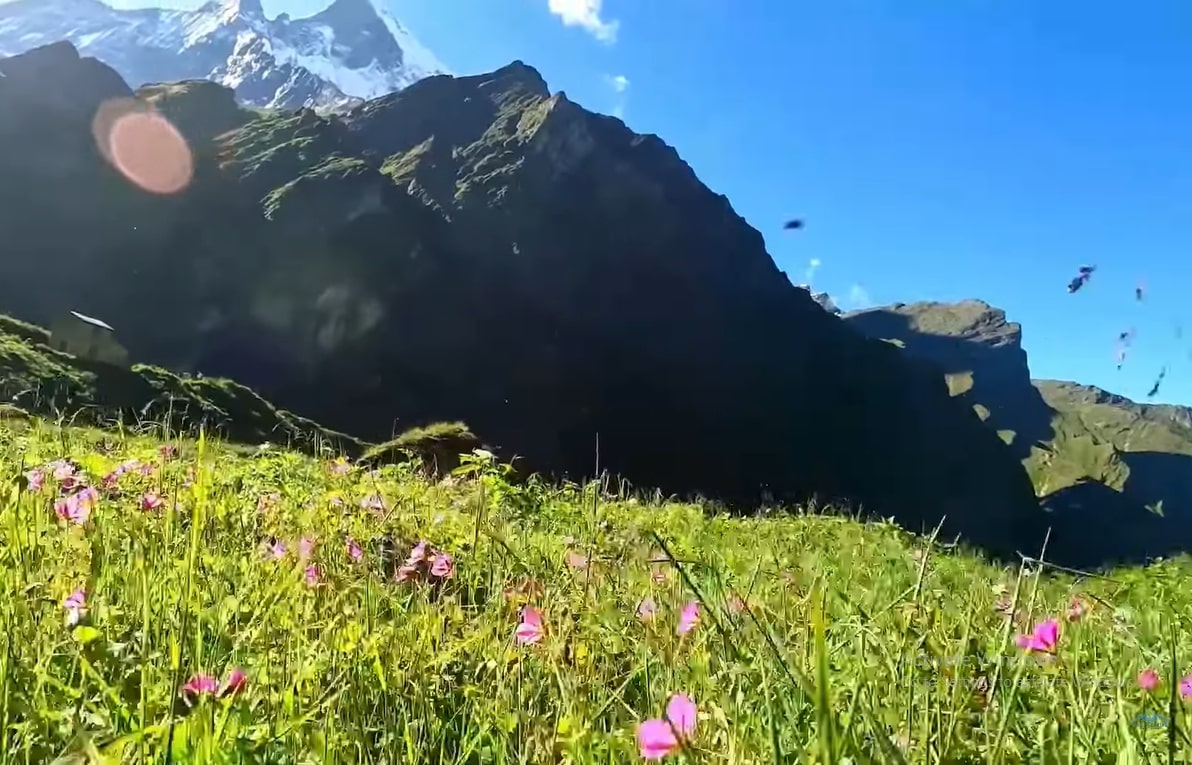
The monsoon season (June to August) is not recommended for trekking in the Annapurna region. The weather is unpredictable and the trails can be muddy and slippery. The daytime temperatures range from 20°C to 25°C (68°F to 77°F).
The nighttime temperatures can drop to as low as 10°C to 15°C (50°F to 59°F) in higher altitudes. The skies are usually cloudy, and trekkers may not be able to enjoy the panoramic views of the snow-capped mountains.
Winter Season
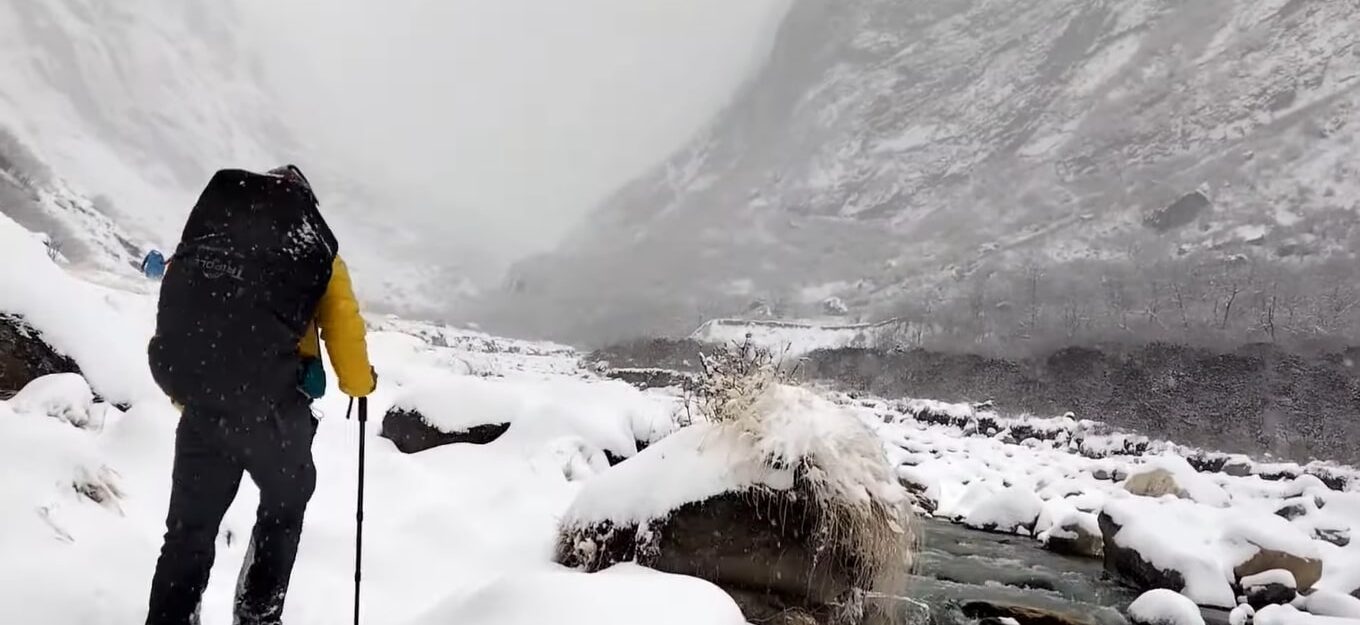
The winter season (December to February) is also not recommended for trekking in the Annapurna region as the temperatures are too cold. The trails may be covered in snow. The daytime temperatures range from 10°C to 15°C (50°F to 59°F), while nighttime temperatures can drop to as low as -10°C to -15°C (14°F to 5°F) in higher altitudes.
Difficulty Level of Annapurna Base Camp Trek
Annapurna Base Camp Trek is rated as a moderate to difficult trek. Although it is not as challenging as other high-altitude treks like the Everest Base Camp Trek or Thorong La. The trek is still challenging and requires a reasonable level of fitness.
Trekkers will need to be able to walk for several hours each day, and altitude sickness can be a concern. It is therefore important to take time to acclimatize, stay hydrated, and listen to your body throughout the trek.
Flora and Fauna Along the Annapurna Base Camp Trek
One of the best things about the Annapurna Base Camp Trek is the incredible diversity of flora and fauna that you will encounter along the way.
The trek passes through several different climatic zones, ranging from subtropical forests to high-altitude alpine meadows. Along the way, you may spot monkeys, deer, and even rare birds such as the Himalayan monal.
Weather and Temperature on the Annapurna Base Camp Trek
The weather and temperature on the Annapurna Base Camp Trek vary depending on the time of year you choose to trek. The best time to trek is during the autumn season (September to November) or the spring season (March to May). The weather is generally dry, and the temperatures are mild.
The monsoon season (June to August) should be avoided as the trekking trails can be slippery and dangerous due to heavy rain. In winter (December to February), the temperature can be extremely cold. The trek may be more challenging due to snow and ice on the trails.
What will you come across in the Annapurna Base Camp trek and the weather?
The Annapurna Base Camp trek is a popular trekking destination in Nepal. It offers stunning views of snow-capped mountains, lush forests, and unique local culture. Here are the key points that you’ll come across on the trek:
- Snow-capped mountains, including Annapurna and Machhapuchhre (Fishtail)
- Lush forests, including rhododendron and bamboo forests
- Unique local culture, including Gurung and Magar communities
- Varied flora and fauna, including Himalayan tahr, snow leopard, and over 100 species of birds
- Weather can vary depending on the season, with the monsoon season (June-August) bringing heavy rainfall and the winter season (December-February) bringing snow and colder temperatures
- The best time to trek is in the spring (March-May) or autumn (September-November) seasons when the weather is usually dry and clear
- High altitude and challenging terrain can make the trek physically demanding and require proper acclimatization and fitness
- Accommodation options include tea houses along the trekking route
- Trekking permits are required, including the Annapurna Conservation Area Permit (ACAP) and Trekkers’ Information Management System (TIMS) Card.
FAQs
What is the average temperature during the autumn season on the Annapurna Base Camp Trek?
During the autumn season, the temperature on the Annapurna Base Camp Trek ranges from 10°C to 15°C (50°F to 59°F) during the day. It can drop from -5°C to -10°C (23°F to 14°F) at night. The weather is generally dry and sunny, making it the best time to trek the region.
How does the weather change as you trek higher into the mountains on the Annapurna Base Camp Trek?
As you trek higher into the mountains on the Annapurna Base Camp Trek, the weather can change rapidly. The temperature can drop significantly, and the weather can become more unpredictable.
You may experience snow and icy conditions, especially during the winter season. It is important to be prepared for changing weather conditions and have suitable clothing and gear.
What precautions should I take during the monsoon season on the Annapurna Base Camp Trek?
During the monsoon season, the Annapurna Base Camp Trek can be dangerous due to heavy rainfall and slippery trails. It is important to wear appropriate footwear with good grip and to be cautious while walking.
You should also carry rain gear to protect yourself from the rain. It is advisable to trek with an experienced guide who is familiar with the trail and can help you navigate through any challenging conditions.
What is the best time to trek the Annapurna Base Camp Trek?
The best time to trek the Annapurna Base Camp Trek is during the autumn season (September to November) or the spring season (March to May). The weather is generally dry and mild during these seasons, making it the ideal time for trekking. However, if you prefer to trek during the winter season (December to February), you should be prepared for extremely cold temperatures and snowy conditions.
What kind of flora and fauna can be seen on the Annapurna Base Camp Trek?
The Annapurna Base Camp Trek is rich in flora and fauna. You can see a variety of rhododendron forests, bamboo groves, and alpine vegetation on the trek. Wildlife such as Himalayan Thar, Musk Deer, Snow Leopard, and Himalayan Black Bear can also be spotted along the way. Birdwatchers will have the opportunity to spot many different species of birds. It includes the Himalayan Monal, Blood Pheasant, and Koklass Pheasant.
Conclusion
Annapurna Base Camp Trek is a popular trekking destination in Nepal. It is popular for its panoramic views of snow-capped mountains and stunning natural beauty. The trek can be completed within 7 to 14 days. It depends on the route you choose and the time you take to acclimatize to the altitude.
The trek is challenging but accessible to most people with reasonable fitness levels. And it is a great way to experience the unique flora and fauna of the Annapurna region. If you are planning to undertake the Annapurna Base Camp Trek, make sure to plan your trip carefully.
Choose the right season, and take the necessary precautions to ensure a safe and enjoyable trekking experience.
